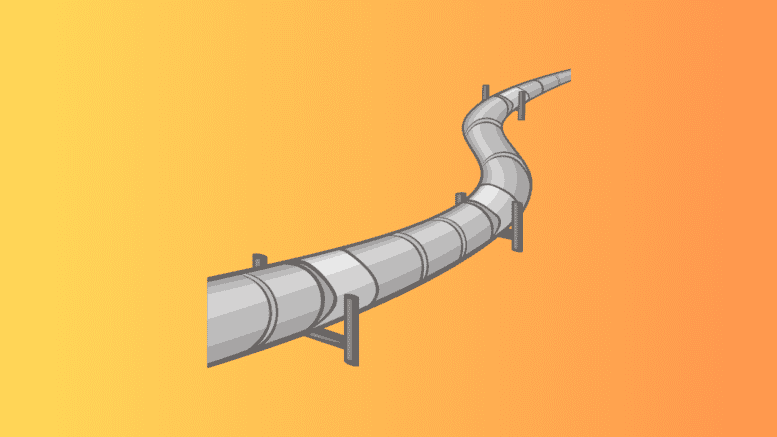by Thomas Froehlich, King’s College London, [This article first appeared in The Conversation, republished with permission]
Finland’s president, Sauli Niinistö, has alluded to “outside activity” and said sabotage is likely to be the cause of damage to an important gas pipeline that links it to Estonia.
The pipeline suffered a leak in Finnish waters on October 8, caused by an explosion, and has subsequently been shut down. A nearby telecommunications connection in Estonian waters was also damaged. It is so far unclear whether this was caused by the same or additional explosions.
Reports show that pressure dropped in the pipeline and seismic sensors detected at least one explosion. Nato has promised to act if the pipeline has been attacked. Concerns are being raised about Russia’s possible involvement, although it is denying any role.
Some analysts say the cause of the damage is not clear. Finnish prime minister Petteri Orpo gave a careful statement emphasising that: “It is too early to draw conclusions on who or what caused the damage.”
Just as with the sabotage on the Nord Stream gas pipelines linking Russia to Europe in 2022, the possible attack is difficult to attribute. The Kremlin has pushed back against claims of Russian involvement in Nord Stream, blaming it on other countries.
In any case, the Estonia-Finland pipeline is unlikely to go back online until April next year, according to operator Gasgrid Finland.
Why is the pipeline important?
The EU financed 75% of the project’s total cost of around €300 million (£258m). Finnish state-owned operator Gasgrid and Estonian operator Elering financed the remaining 25% of the pipeline, which has a capacity of 2.6 billion cubic meters per year.
Planning began in 2007, and the pipeline became operational in 2020. It is Finland’s only connection to the EU domestic gas market, via the Gas Interconnection Poland–Lithuania (GIPL) pipeline system.
The Estonia-Finland pipeline is capable of bi-directional flow, which means that depending on current demand and available supply, gas can be transported from Finland to Estonia or vice versa.
The pipeline’s closure should not affect Finnish energy supply security. Although it supplies about a third of Finland’s overall gas use, only 5% of Finnish energy supply stems from gas. While Russia stopped gas exports to Finland as a reaction to the country’s Nato application in 2022, Finland can receive liquefied natural gas (LNG) via its floating LNG terminal in Inkoo, which has a capacity exceeding Finland’s total gas demand.
The importance for Estonian energy supply security is more relevant, as flow had been reversed in 2023 to deliver LNG to Estonia at a rate of 30 GWh/day, which equals between 15 and 18% of Estonia’s daily energy consumption. However, Estonia can also rely on the Klaipėda LNG terminal in Lithuania.
What are the risks involved?
Given these numbers, the risk to energy supply security in Finland and Estonia is low. But the damaged pipeline might increase gas price volatility in Europe, which in turn could lead to further strengthening of right-wing populist parties who have campaigned against supporting Ukraine, and aim to weaken European institutions by building concern about the increasing cost of living.
If evidence of sabotage can be found, Nato’s Article 5 – the basis for the alliance’s collective defence mechanism – would mean an attack on any member would be considered an attack on all. Estonia has been a Nato member since 2003 and Finland recently joined the alliance in the wake of Russia’s full-scale war against Ukraine.
Since the flow of the pipeline had only recently been reversed to deliver gas from Finland to Estonia, a deliberate attack on this piece of critical infrastructure – if proven – must certainly be interpreted as a threat to the Baltic states.
What needs to be done now?
In a tense geopolitical environment amid Russia’s war against Ukraine, competition between the US and China in the Pacific, and new conflict in the Middle East after Hamas’s attacks on Israel, a thorough investigation of the incident is necessary before jumping to any conclusions.
Rhetorical escalation might lead to increased conflict, so it’s important to note that an accident has not been fully ruled out. Estonia’s navy commander Jüri Saska said the damage appears like “someone tore it on the side”, which could refer to a mechanical impact by a passing vessel.
In any case, it is important to increase security around other critical infrastructure. If this constitutes an act of sabotage, deterrence has clearly failed. A strong and coordinated effort needs to be made to substantially increase surveillance capacity for critical infrastructure – ideally on a pan-European level.
To minimise future disruptions to energy infrastructure, further diversification of the EU’s energy supply would be a useful step. Expanding solar capacity for domestic use and geothermal sources for industrial applications offers a route to increased supply security.
Even though it has not been proven that the damage to the pipeline was caused by sabotage, or indeed Russia, it is crucial for Europe to not back down on support for Ukraine, as this would be interpreted as a sign of weakness by Moscow. As the US is currently putting more efforts into deterring Iran from intervening in the newly resurfaced Middle Eastern conflict, the onus is on the EU to support Ukraine’s defence against Russian aggression.
While it is unclear at this point what or who led to the damage of the pipeline, calm communications during the investigation must be a priority.
Thomas Froehlich, Research Fellow, Department of War Studies, King’s College London
This article is republished from The Conversation under a Creative Commons license. Read the original article.
